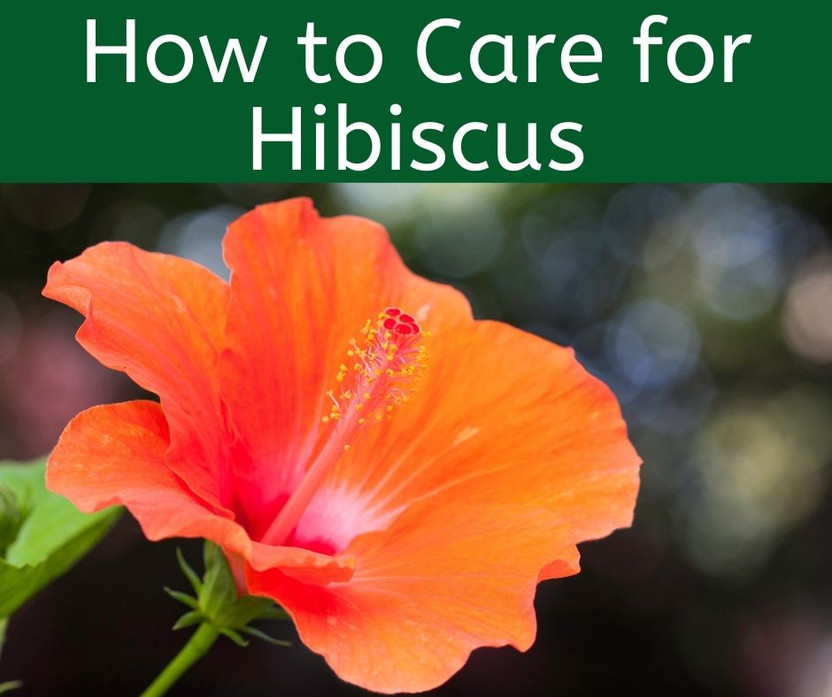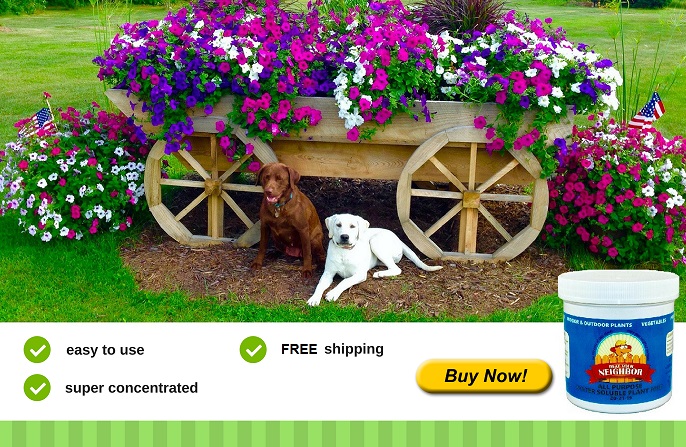How to Care for Hibiscus Plants
Posted by Scott Sharkey on Feb 20th 2021
One of my favorite tropical flowers to grow every year is the hibiscus plant. Living in a cold, upper mid-west climate like Northern Wisconsin, we don't have any tropical plants native to our area. So one of our traditions is adding several tropical plants to our pool deck area for the summer to give that much "warmer feel" that our friends down south get to enjoy every day.
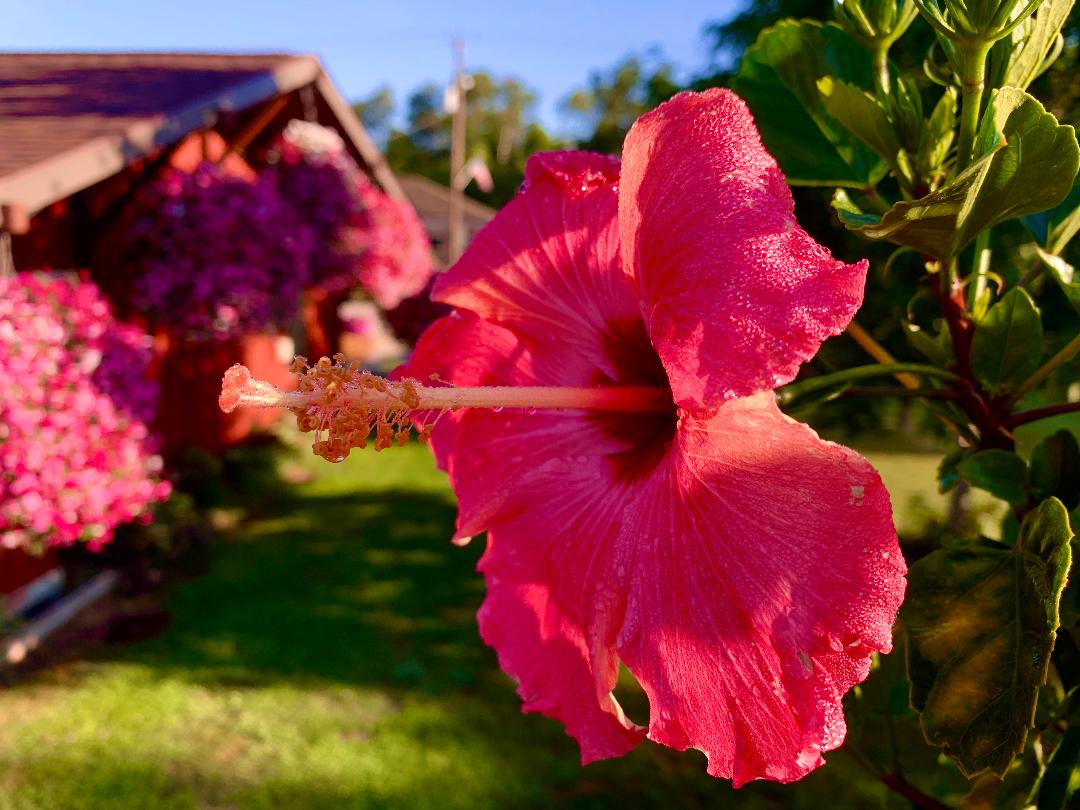
Hibiscus plants are a great way to add a tropical feel to an outside patio or deck for the summer and they are actually quite easy to care for. If you live in an area where the temps fall below freezing you definitely will have to bring your hibiscus in during the fall.
First select a nice hibiscus plant from your local garden center. Many hibiscus plants come as a braided tree, meaning there may be upwards of 3 different plants and then the stems are braided (just like a ponytail) into one stronger, central trunk. Many times they will be assorted colors, which gives a unique look to the plant having several different color flowers all coming out from one tree.
Container for your Hibiscus
Often the plants will be in a small, gallon sized plastic container. Pick out a nice ceramic pot or appropriate container that has some weight to it. As hibiscus grow and flower, they can easily tip over in the wind if the container isn't heavy enough to accommodate. Be sure to pick out a container that can handle the hibiscus getting tall and full of foliage. Also be sure that there is adequate drainage at the bottom.
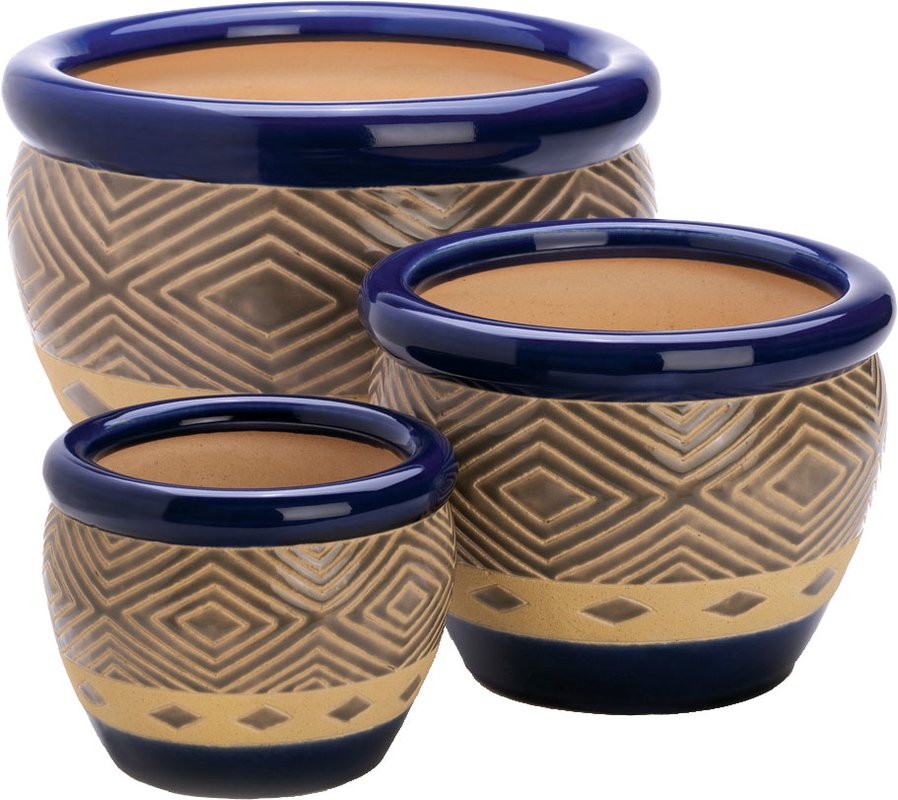
Hibiscus plants like to be somewhat root-bound, so when replanting into a bigger container, be sure to pack the soil tightly around the root ball. Also, use a good quality soil. You've heard us preach this important point before, if not read about it here:
https://beatyourneighbor.com/blog/the-importance-o...
Watering Hibiscus
If your hibiscus are outside, they will have watering requirements much like your other plants and flowers such as hanging baskets or containers. Put your hibiscus into the same watering rotation as them and you should be fine. They will take a lot of water, so a large container helps keep the soil moist and will be less work for you.
Hibiscus are Messy
Hibiscus produce new flowers all the time during their flowering period. The temperature for them to flower will be between 60 to 90 degrees. The flower itself only lasts a day or two and then they fall off. You will have some flowers to pick up when they do drop, but the shear beauty of the plant will make up for the little bit of extra work. You can see in the below photo that the Hibiscus truly adds a warm tropical feel to your yard.
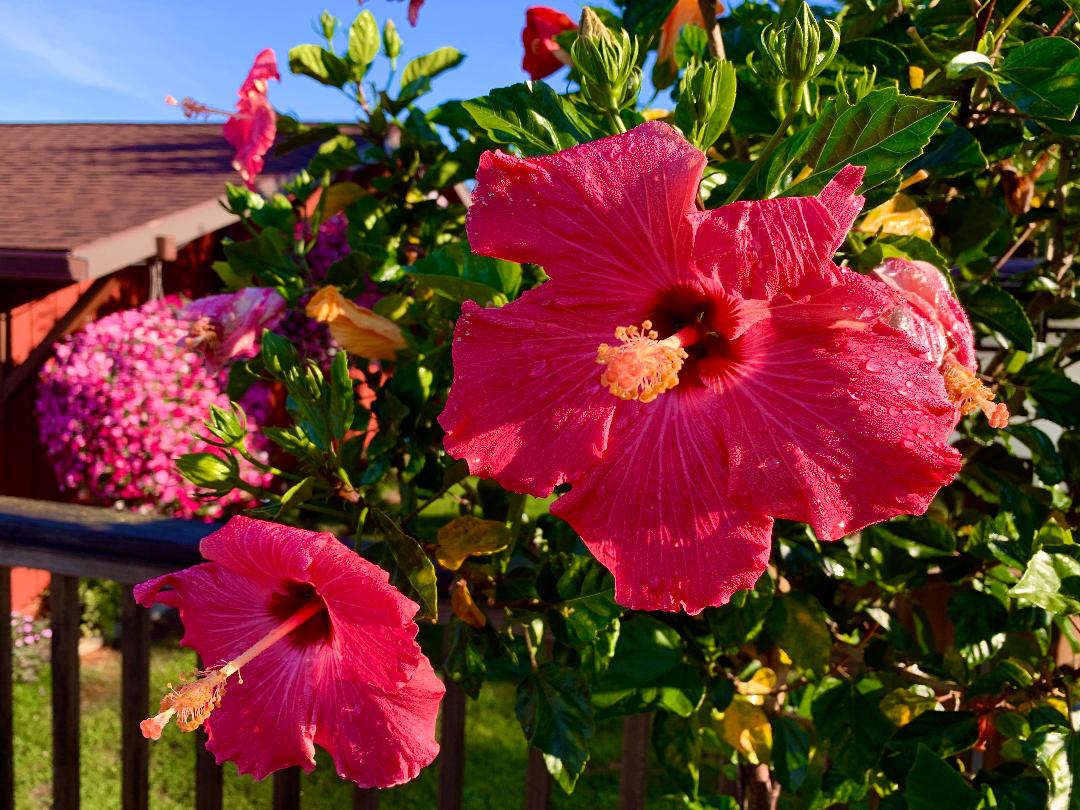
Above picture: Our Hibiscus on our pool deck.
Common Problems with Hibiscus
As beautiful as hibiscus plants are, they can have their problems too. One of those problems can be for the plant to get buggy. Watch carefully for aphids and thrips. The best care is always preventative, so it is our suggestion to use a systemic insecticide to prevent any problems before they happen. A systemic insecticide is usually sprinkled at the base of the soil and when watered the insecticide will go down into the roots and be absorbed up into the plant. When a piercing type of insect (such as aphids or thrips) try to "drink" from the plant's stem they will ingest the insecticide. You won't harm good insects like bees and butterflies, just the harmful. If you bring your hibiscus into your home after it has been outside, you will want to make sure that it has had a good dose of insecticide, otherwise you will be dragging all the outdoor insects (which you won't even see) inside and may have a problem with spreading to other house plants.
You can find the systemic insecticide here: https://amzn.to/4177Z1D
Fertilizing Hibiscus
Your outdoor hibiscus can be fertilized once a week, just like your other outdoor plants and flowers. They bloom a lot, so they will need the extra nutrients that our Beat Your Neighbor fertilizer provides to keep them profusely producing flowers. If you have your hibiscus indoors (such as moving it inside for cooler temps) just fertilize about once a month.

